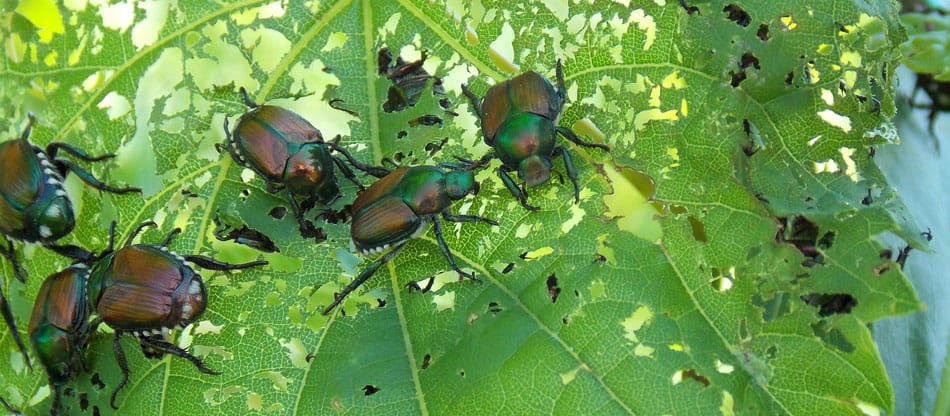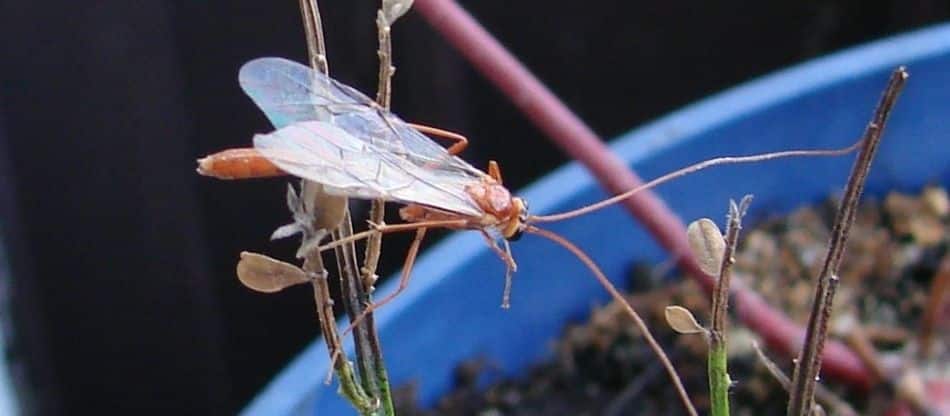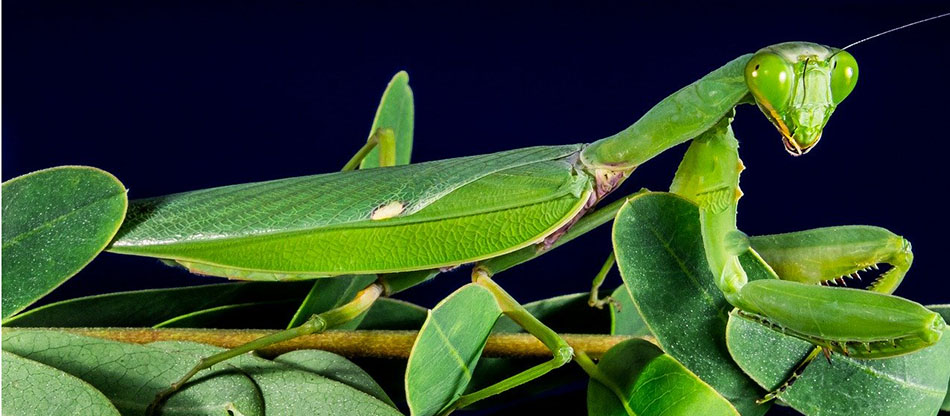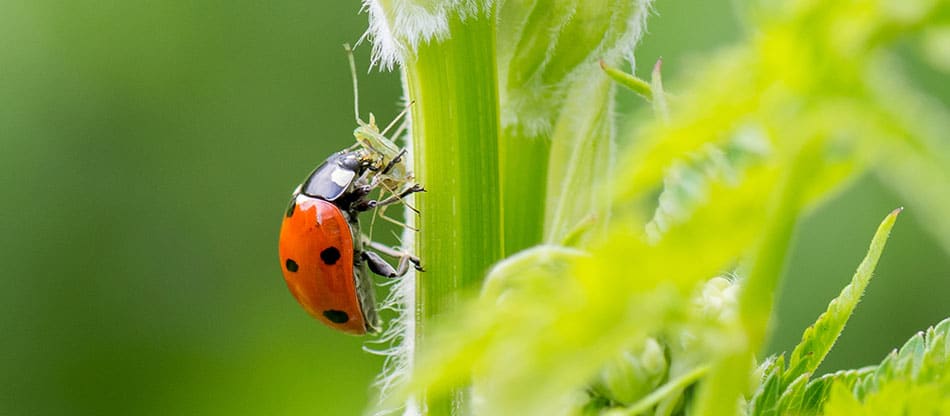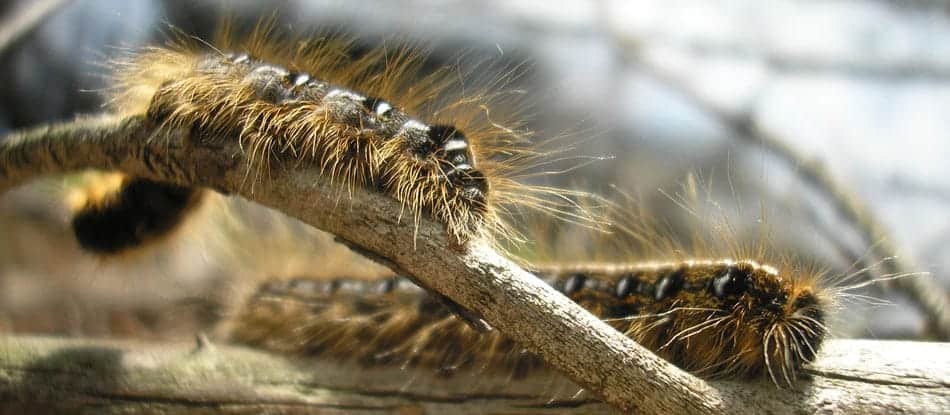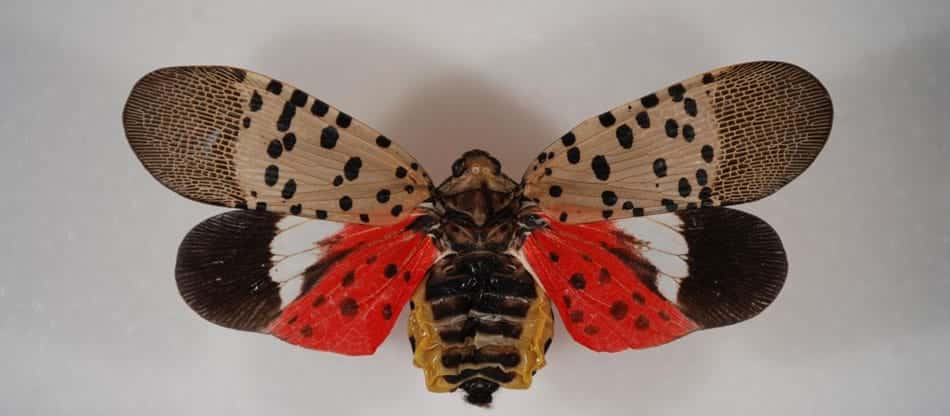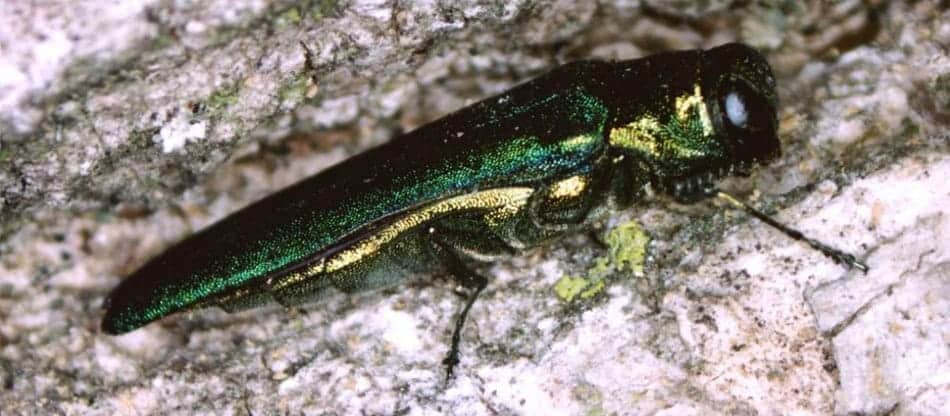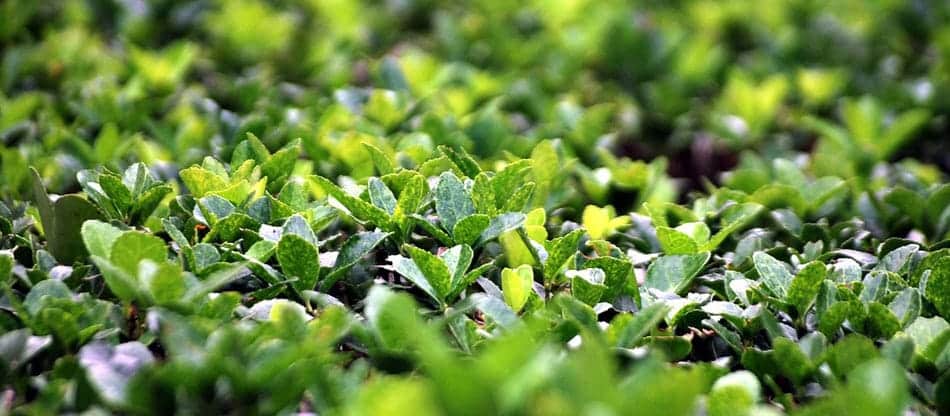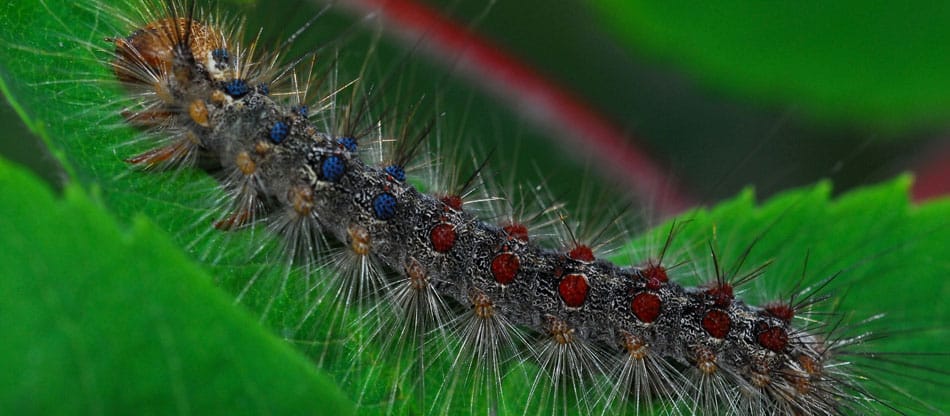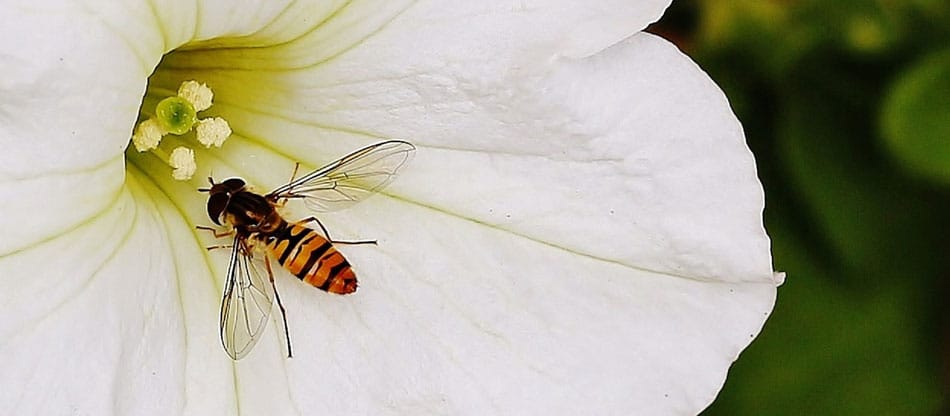Pest & Disease Management for Trees & Shrubs
To Keep Trees & Shrubs Healthy & Looking Their Best
Keep Shrubs and Trees Pest- and Disease-Free
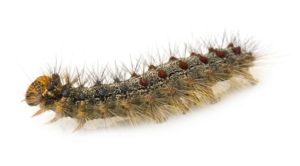 Integrated Pest Management (IPM) is part of a well-developed Plant Health Care (PHC) program. It involves regular monitoring, anticipation, proper pest identification, establishing tolerable damage thresholds, and targeted biological and alternative pesticide treatments, when necessary, to keep insect and disease problems under control.
Integrated Pest Management (IPM) is part of a well-developed Plant Health Care (PHC) program. It involves regular monitoring, anticipation, proper pest identification, establishing tolerable damage thresholds, and targeted biological and alternative pesticide treatments, when necessary, to keep insect and disease problems under control.
Our PHC technicians are trained not only to identify pests and diseases, but also to locate and identify beneficial predators and pollinators within the landscape at their various growth stages.
Our goal isn’t to exterminate every pest, but rather to keep populations below a level of esthetic and economical damage that you can live with. With some prey in the landscape, beneficial predators will be enticed to stay and dine.
Call OPC For Tree & Shrub Treatment!
Call us today to schedule a complimentary assessment of your landscape. Our pest and disease experts will inspect your plants, identify any problems, and provide you with a program and estimate customized to treat your specific trees and shrubs.
Pest & Disease Management Programs
Why Hire Organic Plant Care LLC?
As an owner-run company, we offer personalized, consistent service and technicians who know the history of your property season after season.
If you value the benefits of organic treatments, we're the right choice. We use effective and safe organic treatments to suppress problems while encouraging beneficial insects and maintaining ecological balance.
Complimentary Tree & Shrub Pest & Disease Management Quote
Click to get started with your organic pest and disease management program or give us a call at 908-309-6611.
Tree & Shrub Care Resources
Common Shrub Pests
These common shrub pests in central NJ and PA can cause extensive damage.
Common Tree Pests & Diseases
Emerald Ash Borer - Unless a tree is treated before serious infection, it will die. The only option for a badly infected tree is to remove it.
5 Worst Tree Diseases in Central NJ/Eastern PA
Rodents - These critters chew through bark and roots, mostly in winter when they're hidden beneath a blanket of snow
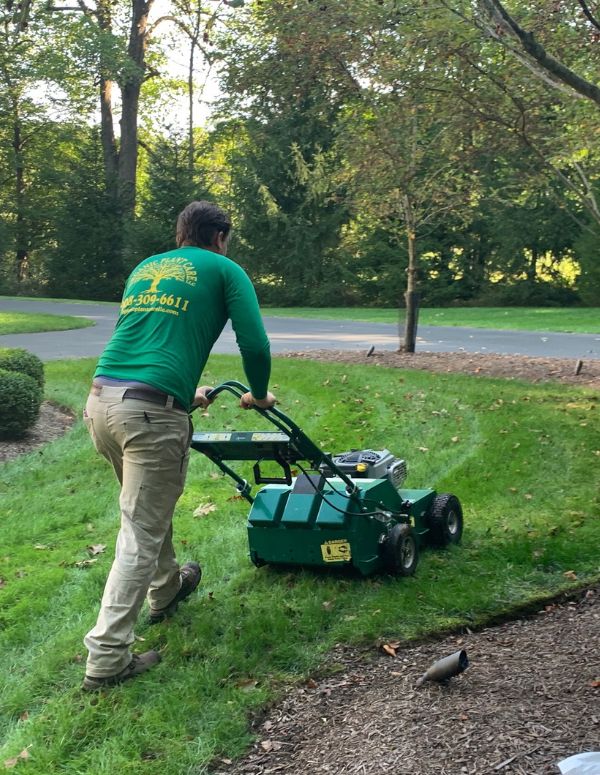
Pest & Disease Resources for Trees & Shrubs in New Jersey
- Anthracnose -
- Apple Scab – Blotchy leaves and dropping/rotted fruit on apples and crabapples
- Bacterial Leaf Scorch -
- Bagworm – Often found in arbovitae
- Boxwood Blight -
- Boxwood Leafminer – Yellowing, blistered leaves and small orange midges flying around the shrub in spring
- Cedar-Apple Rust / Hawthorn Apple Rust – Spotted leaves and rotted fruit on apples, crabapples and hawthorns
- Chlorosis – Yellow tree leaves with green veins
- Diplodia Tip Blight – Dead tips on pine trees
- Dothistroma Needle Blight – Dying needles on older pine branches
- Eastern Tent Caterpillar (and Fall Webworm) – Leaf-eating caterpillars that can easily defoliate an entire tree
- Emerald Ash Borer – Once infested with EAB, ash trees die quickly
- Fireblight – Causes dying branch tips in apple, pear, and crabapple trees
- Gypsy Moth (Spongy Moth) -
- Japanese Beetles– Beetles that quickly devour leaves, giving them a lace-like appearance
- Rhizosphaera Needlecast – Dying needles and premature needle drop on spruce trees
- Scale Insects – Scale looks like white or brownish dots on the trunks and stems of declining trees
- Spider Mites – Tiny sap-sucking, spider-like creatures that cause stippling and yellowing on leaves and can kill the plant
PHC stands for Plant Health Care, which is a fancy way of saying that we do all of the things necessary to keep plants (including trees, shrubs, lawns, and landscape plants) healthy. That includes fertilization and soil improvement, as well as identification, control, and prevention of problems caused by pests and diseases.
Integrated pest management (IPM) is a streamlined, ecological approach to pest management that gives you more effective results with less need for harmful chemicals. It is more effective in controlling the “bad bugs” in your yard and is safer for people, pets, and the environment compared to the traditional method of spraying everything with insecticide. Plus, IPM saves you money that would’ve otherwise been spent on unnecessary pesticides.
IPM includes regular monitoring of pest populations, the use of biological and cultural controls (including beneficial predators and pollinators), applying physical controls, planting pest-resistant varieties, and using organic pesticides.
The goal of IPM is to manage pest populations for long-term prevention, not necessarily to eradicate them entirely. If pest populations are kept down, they’ll cause fewer problems and little noticeable damage in your yard or garden.
Plant Health Care programs offered by Organic Plant Care provide preventive care or treatments for a wide range of plant pests and diseases. Examples of common pests and diseases we can help you with include:
- Eastern Tent Caterpillar
- Emerald Ash Borer
- Gypsy Moth
- Spotted Lanternfly
- Rodents
- Boxwood Leafminer
- Japanese Beetles
- Lace Bug
- Deer
- Apple Scab
- Anthracnose
- Cedar-Apple Rust
- Bacterial Leaf Scorch
- Boxwood Blight
- And more!
Plant health care not only prevents issues, but it also maintains healthy plants. Well-cared-for plants, trees, and shrubs are better able to stave off destructive pests and diseases and recover from stressful situations.
For the best results, many of our PHC services are offered as an annual program, renewed by an updated proposal each year.
That depends on what you are treating.
Some tree diseases, for instance, are only stopped by preventive treatments; treatments must be applied before the disease has affected your tree. For example, trees and shrubs that are prone to certain fungal leaf diseases are preventively treated three times a year with a bio-organic fungicide, usually in late spring and early summer. Once the disease is visible, it’s too late to treat it.
Other treatments are applied only when the problem, whether it’s a pest or disease, is present. For example, we treat for Spotted Lanternfly when the adults are active and feeding on the leaves and sapwood.
In some cases, treatment may still be possible. In others, your tree or shrub may have already begun to decline and could be beyond saving.
Contact us for an inspection to determine the health and prognosis of your trees and shrubs.
There are many environmental conditions that can stress your trees. Common tree problems in central New Jersey include:
- overwatering or underwatering,
- improper planting,
- heat stress,
- freezing temperatures,
- rodent damage,
- lack of available nutrients in the soil,
- compacted soil,
- frost cracks,
- woodpecker damage,
- improper pruning,
- mulch volcanoes piled around a tree, or
- other environmental factors
A stressed tree will be more susceptible to pests and disease. Contact us for a professional consultation so we can help you determine how to improve the overall health of your trees.
There are always new insects and diseases that are arriving in the Central New Jersey and Eastern Pennsylvania area, plus others that continue to spread rapidly. Given that prevention is often the best option, we recommend an annual inspection by a knowledgeable tree care professional. They will identify potential problems in your landscape (such as poor soil conditions), evaluate the health of your trees and shrubs, and recommend appropriate treatment options to increase plant vigor and head off problems before they start.
You should also call a professional if your trees or shrubs
- show signs of decline (such as slow growth, small or yellowing leaves, prematurely dropping leaves, or dead branches)
- have an insect infestation (check our extensive collection of information about garden pests for signs and symptoms)
- are affected by a disease (you'll usually notice signs of decline, strange growths on the tree, spots or fuzzy areas on leaves, mushrooms around the tree base, or other things that don't look "right", such as these tree diseases that are common in New Jersey and Pennsylvania
That depends. Many of the most effective insect and disease treatments can only be applied by professionally licensed pesticide applicators. While there are homeowner treatment options for small trees, these require careful application to avoid unintended environmental impacts. For example, products can leach into groundwater and some products are highly toxic to pollinators and aquatic invertebrates.
In general, we recommend having trees that are larger than 12-14 inches in diameter (as measured 4.5 feet from the ground) treated by a professional with the knowledge and equipment (such as a high-powered spray rig or tree injection kit) to do the job correctly.
Healthy plants start with healthy soil. For trees and shrubs, we can improve their vigor, health, and appearance with our annual fertilization and soil conditioner program, supplemented by Deep Root Fertilization every few years (and especially during times of drought or high stress for your trees and shrubs).
Plants that receive enough water and nutrients are naturally more resistant to pests and diseases. To help keep them healthy,
- Check your irrigation system to make sure it’s working as scheduled and adjust it as needed.
- Maintain mulch around the dripline of your trees and throughout shrub and mixed planting beds.
- Enrich your soil with compost or compost soil conditioner for improved soil texture and water-holding capacity.
- Protect your trees from damage by mowers, string trimmers, and other equipment.
A healthy garden should always have a mix of plants (including native plants) that attract wildlife, beneficial insects, pollinators, and beneficial predators. In many cases, the insects that transmit diseases can be eaten, killed, or parasitized by beneficial predators, including tiny parasitic wasps, praying mantises, dragonflies, spiders, and songbirds.

